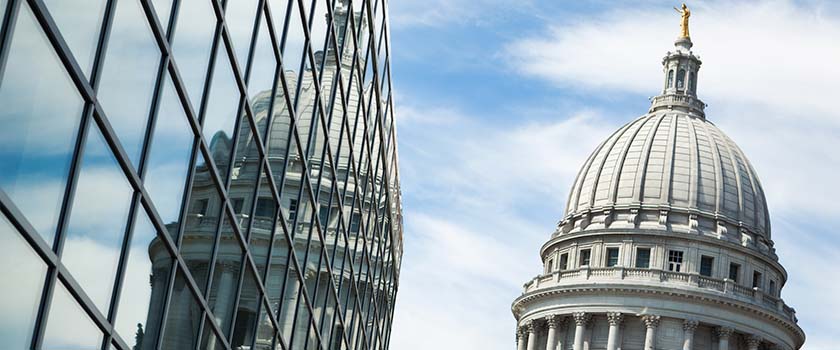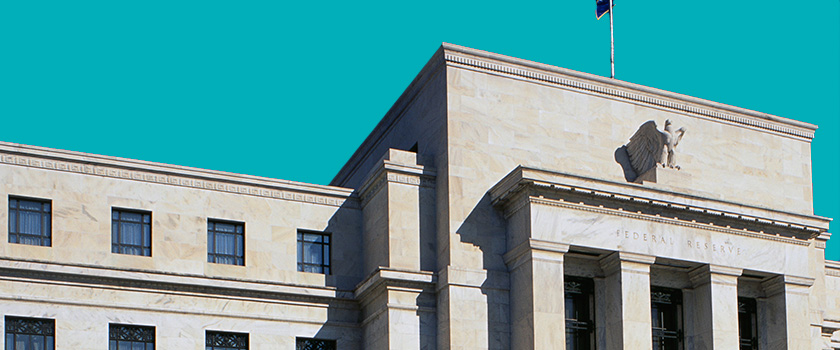Bond defaults were not part of the debate for much of 2020. However, these have picked up steam in Q4-20, resulting in a record level of USD 21.8 billion YTD, far exceeding the previous high of 2018.
Key takeaways
-
We expect to see an increase in bond defaults heading into 2021, for three key reasons: 1) Domestic liquidity will remain on a gradual tightening trend; 2) Chinese policymakers are keen to resume deleveraging efforts; and 3) Deepening financial reforms in China will require a higher incidence of delinquencies.
- That said, it is unlikely that bond defaults will become systemically important, for three key reasons: 1) Corporate bond defaults are minute compared to China’s massive USD 4 trillion bond market; 2) The People’s Bank of China (PBOC) will proactively manage liquidity to avoid a funding squeeze; and 3) Despite we have seen an increase in State-Owned Enterprise (SOEs) defaults, this is no free-for-all and policymakers will not hesitate to intervene if necessary.
- Going forward, Chinese corporate debt will remain attractive from a risk-reward perspective, given high USD credit spreads, low relative risks and better economic momentum. Credit differentiation in terms of sectors will remain key for investors looking to gain exposure while simultaneously avoiding pitfalls.
Higher bond defaults amid tighter domestic liquidity
Corporate bond defaults were once considered a rare occurrence in China. This is because borrowers have historically relied heavily on financial support from state-owned banks in times of trouble. However, things have started to change in the world’s second largest bond market. As Chinese policymakers continue to address issues surrounding a build-up in corporate debt, they have taken steps to remove implicit guarantees, resulting in a higher number of bond defaults. These peaked in 2018, before easing off in 2019, as US-China trade tensions prompted authorities to reintroduce support. Bond defaults have also been absent for much of 2020, as policymakers sought to limit the economic impact of the COVID-19 pandemic. However, these picked up steam again in October and November, exceeding 2018 levels. But are we witnessing such a sharp increase in bond defaults now?
The People’s Bank of China (PBOC) implemented a cumulative 30 bps in rate cuts to the Loan Prime Rate (LPR), Medium-term Lending Facility (MLF) and the PBOC 7-day Reverse Repo rate between January and May 2020. Funding costs dropped, as expected. However, they have been creeping up gradually since. PBOC has been pulling back on some of this support, thanks to stronger economic momentum. Moreover, the bank is keen to resume deleveraging. As a result, the 3-month Shanghai Interbank Offered Rate (SHIBOR) reached 3.13% at the end of November 2020, levels not seen since before the pandemic.
Despite the PBOC has held back from delivering additional easing, financial conditions remain accommodative according to our financial conditions index 1. Changes in liquidity conditions are more directly correlated to an increase in defaults than overall levels. Tightening financial conditions make it more expensive for companies to access working capital, causing some companies to run into cash-flow difficulties. When these firms are unable to tap traditional or shadow sources of financing, they are left no alternative but to default on their debt obligations. Liquidity has been on a tightening trend since June this year, after easing in H1-20. This tendency also characterized the runup to the increase in corporate bond defaults observed in 2018.
More corporate bond defaults…
We expect that bond defaults will continue to increase in 2021 due to three main factors:
- Domestic financial conditions remain accommodative, but liquidity may tighten gradually as economic conditions normalize in 2021. Notably, the demand for working capital could increase temporarily at the end of the year and ahead of a deadline on loan moratoriums to alleviate pressures surrounding COVID-19 lockdown measures, scheduled to expire at the end of Q1-21. These conditions may be further aggravated by currency appreciation, as the yuan is forecasted to remain on a gradual appreciation path (USDCNH 6.30 in 2021).
- Policymakers will resume ongoing deleveraging efforts. Reducing economic fragilities surrounding Chinese corporate debt will continue to be a top priority for policymakers, as evidenced by official remarks made during the Economic Work Conference on December 16. This is not new – in fact, the deleveraging campaign was in full swing in 2018, coinciding with an increase in bond defaults. PBOC has kept outstanding credit growth buoyant, but riskier shadow banking components will continue to be driven down. Forinstance, outstanding aggregate financing was 13.7% y/y in November 2020 vs 10.8% on average in 2019. On the contrary, trust loans and entrusted loans contracted by -4.0% y/y and -9.9% y/y in November. This is a telling sign that the authorities will continue to walk a tight rope between stabilizing growth and reducing economic fragilities.
- The success of this approach will ultimately depend on the government’s ability to deepen financial reforms. Weaning Chinese enterprises off their historic dependency on bank loans and towards market-based instruments, such as bonds and equities, is no small feat. A shift of this magnitude will only be successful if non-performing companies with diminishing returns on assets are gradually allowed to go defunct.
… but no source of systemic risk
With that being said, we do not expect that this will result in systemic risk due to three main factors:
- Bond defaults in 2020 constituted less than 0.6% of China’s massive bond market (CNY 15 trillion or approximately USD 4 trillion). For China’s debt restructuring gambit to pan out as expected, the pace of financial reforms must accelerate rapidly. This means that the pace of China’s bond market opening will outpace that of defaults, resulting in relatively low levels of risk compared to other markets that yield less. Chinese government bond yields remain stable around 3.00% while good quality companies can yield much more. For instance, in the HY space, USD credit spreads currently exceed 600 bps. At 0.6% YTD, the default rate is much lower than the 3.3% and 4.4% observed in Emerging Europe and Latin America.
- PBOC has ample policy space to proactively manage liquidity. Our baseline scenario assumes no interest rate cuts in 2021. Under this scenario, liquidity injections via open market operations (OMOs) and an extension of financial forbearance beyond Q1-21 will suffice to direct funding costs lower. As a matter of fact, the interbank rate has declined following a massive net injection of USD 170 billion via OMOs in the first 15 days of December (USD 900 billion alone on December 15). Under our risk scenario, the PBOC could trim interest rates by another 25-50 bps in case financial conditions tighten excessively in 2021. Expectations of weaker inflation (CPI -0.5% y/y in November) would contribute to supporting real rate differentials with the US in any case, reducing capital outflow risks.
- Some of the latest bond defaults involved State-Owned Enterprises (SOEs), throwing doubt on the credit risk of a group of borrowers that had previously been “risk free”. To make matters worse, China’s local credit rating agencies assign a top Investment Grade (IG) rating of AAA to most domestic debt denominated in CNY – clearly not the case – resulting in a more negative perception of the entire spectrum of riskier High-Yield (HY) names. Regulators have been more comfortable with the idea of bond defaults since the first occurrence in 2014 (Chaori Solar). Naturally, this notion has also extended to SOEs. However, while regulators wish to remove implicit guarantees over time, it is farfetched to assume that they won’t step-in to support strategically important companies. That is typically measured in terms of contribution to local employment or national security. Centrally owned SOEs under the SASAC are generally considered to be more “strategically important” than local-level SOEs and Local Government Financing Vehicles (LGFVs).
Credit differentiation to remain critical
Rather than fret over an increase in bond defaults, investors ought to focus on credit differentiation and consider sectors carefully. According to data from Bloomberg, the sectors with the highest bond maturities between now and March 31 (end of moratorium period) are industrials, materials and utilities. However, these sectors featured a relatively small proportion of listed firms that reported stress in debt service. To monitor this, we look at the proportion firms with EBITDA over interest expense ratios below 1. The latter is a precursor of cash flow risks, which is a better indicator of default risks that debt alone. When you combine both factors, consumer discretionary (high impact of COVID-19 lockdown measures), energy (high proportion of non-performing firms) and technology (exposed to trade war risks) emerge as the riskiest sectors for credit investors. In contrast, consumer staples and healthcare featured low levels of debt and stress in debt service. Both sectors are also expected to benefit from cyclical trends and China’s structural shift towards consumption-oriented growth. Lastly, utilities and materials face relatively high bond maturities between now and Q1-21, but these sectors feature a large proportion of strategically important SOEs, resulting in lower stress in debt service.
Going forwards, Chinese debt will remain attractive from a risk-reward perspective. This is especially true considering that risks are concentrated in some sectors and the overall default rate remains low. Investors that do not wish to build exposure on individual names may also consider Chinese government bonds local government bonds. These will benefit from better economic momentum as well as gradual yuan appreciation versus the USD in the months to come. On the flip side, quasi-sovereign financial bonds and LGFVs will increasingly be subject to the same pressures as nonstrategically important SOEs.









